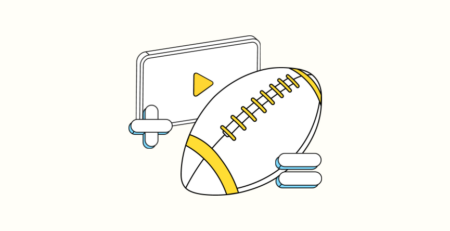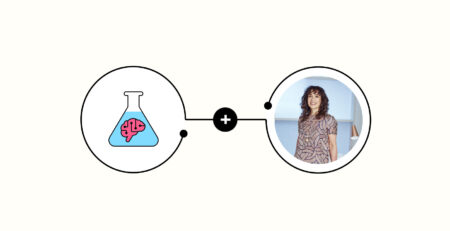COVID-19: digital marketing insights and strategies for the ‘new normal’
As the COVID-19 pandemic continues, industries across the board are having to reinvent themselves to cope with the changing consumer landscape – and many in unexpected ways.
Understandably, many are reassessing their digital marketing strategy and budgets in light of the uncertain economic situation. Where possible, brands that are able to do so can benefit from taking this time to strategize and plan for the future, rather than putting the brakes on.
We wanted to share some digital marketing strategies that may help marketers treading these uncharted waters.
1. Understand changing behaviours in web usage
Everyone is hunkering down at home, and no one really knows how long for. While consumers are spending more and more time online – web usage increased by 19.7% between January and March – the way that we use the internet is changing.
Paid Search
When it comes to online shopping, Google reports that users are spending a lot of time browsing but far fewer conversions are being made on the whole: travel has been hit especially hard, with ‘going out’ fashion also nosediving. Searches for loungewear and pyjamas, on the other hand, are increasing, and home gaming and entertainment are skyrocketing.
Marketers should be aware that any ads that contain COVID-19 or coronavirus-related terms (even those that are ‘approved’ in the interface) will be suppressed by Google: that’s in relation to ad creatives as well as keywords and ad copy. Keep an eye out for a volume of 0 for impressions.
Paid Social
It’s also worth noting that all generations are turning to social media to stay connected during quarantine: research by GlobalWebIndex found a 27% increase in social media use among Gen Z, 30% among Millennials, 29% among Gen X and 15% among Boomers. Facebook reports a 70% increase in usage across its family of apps since the crisis has started.
This, combined with less competition for ad space, has seen CPCs and CPMs drop across our Facebook advertising portfolio. With cheaper ads and people still online shopping (a McKinsey study showed that people spent 14% more than usual on groceries and 1% more on household supplies, as well as 3% more on home entertainment), ensuring that you can meet your consumers’ demands for the goods or services that you advertise will be crucial.
The platforms are also adapting accordingly: due to concerns about fake news surrounding the coronavirus, Facebook is now manually reviewing all new ads and all ad copy changes.
This move will slow down the ad review process immensely, so only make changes if you absolutely need to. If you do need to update your ads or copy, you can take some steps to make sure this doesn’t affect you too much:
- Duplicate your current ad
- Change the copy and wait for review with your original ad running
- When your review is complete you can pause the original ad: this will save you from putting your whole account into review.
2. Talk to your customers in a new way
Don’t forget about brand awareness: now is a great opportunity to reach out and start a dialogue with your target audience. What do your customers want to see from your brand? How do they want to see it delivered? Consumer spending energy may be low right now, but Forrester research suggests they are still expecting new, exciting things to fill the time freed up by social distancing, and are ready to be messaged to.
Many businesses have already been contacting their clientele to let them know the ways in which they can help — this can look very different depending on what industry you’re operating in:
- As we’ve been told to stay indoors, many gyms and studios have been putting classes free online and creative brands have been posting free tutorials — this will be especially helpful to parents as the schools are now closed. On the other end of the spectrum, one gym has even offered all of its London studio spaces to the NHS, creating space for 400 more hospital beds.
- Delivery services are beginning to reduce commissions and relaxing contracts with restaurants. This move supports the hospitality industry whilst also helping food become more accessible to those who may be isolating.
- Many B2C brands are simply changing their email marketing to send positive news into inboxes (think animal videos and uplifting footage of neighbours singing from their balconies).
In doing this, though, remember to tread carefully. People are emotionally exhausted, so only give information you think is truly useful to your customers (and use email with caution, because consumers are getting tired of the influx of coronavirus news in their inbox.
3. Do something different with your advertising budget
It’s a widespread problem: you’re seeing lower conversion rates, and so you’ve cut or even paused your budgets for direct-response channels such as PPC and Facebook. What to do now?
What is clear is that agility and creativity are key for increasing our chances of survival during this crisis: reinvesting that budget into channels with longer-term pay-offs, could be a great move for future success. CRO, SEO and advertising on YouTube are three good examples of this:
CRO
Give your website some TLC – here’s some things to get started with:
- If you’re pulling paid activity back, you could test variations of site pages with high organic traffic.
- Try alternative copy and creatives for landing pages and ads, such as switching holiday messaging to home-context phrasing.
- Capture this moment of people being at home and online to do some solid user research. By gathering remote feedback from users, you’ll better understand needs and how to leverage this as part of a revised messaging strategy
SEO
Take this opportunity to build out a long-term SEO strategy and think about content further up the funnel. If your landing pages currently focus on converting customers, you could focus on content that educates or inform your audience for future remarketing opportunities to turn them into customers further down the road.
Opportunities you could focus on right now:
- Technical SEO: does your site have the ability to be crawled and indexed by search engines?
- Landing page optimization: your site might be indexed, but are there opportunities to focus on improving rankings?
- Keyword research: what new content could you create? Take a look at the questions your audience are asking and what they are searching for.
- Landing page creation: turn that keyword research into high quality content that your audience will want to consume.
YouTube advertising
Never considered running Display ads? People in areas under quarantine are spending more time online, especially on YouTube. Google reports that Cooking, Sports & Fitness and Education channels in particular are seeing an uptick in views. Uploads of ‘workout at home’ videos have increased by 57% globally, while ‘study with me’ video watch time increased by 52% worldwide as many families adjust to homeschooling. YouTube is the perfect place to build up your brand during this downtime – you’ll be reaping the rewards when shopping habits pick back up.
4. Take inspiration from others during this crisis
Look at how other businesses are pivoting and innovating – even those outside of your industry. For example, long-validity gift cards are helping to keep some of these businesses afloat, while others are using their stock to create gift boxes or hampers for delivery.
Other companies that are able to are finding ingenious ways of helping in the fight against the virus: various alcohol brands such as BrewDog have been using their distilleries to make hand sanitiser, whilst Formula 1 teams Mercedes, Red Bull, McLaren and Williams have put their factories to work making ventilators.
Whatever your industry and your capabilities, staying creative and ensuring brand agility could not only help your business, but also the situation at large.
This will be a very slow period for many, but when the crisis is over you want to be front of mind for your customers. People will remember the brands who put their customers first.



